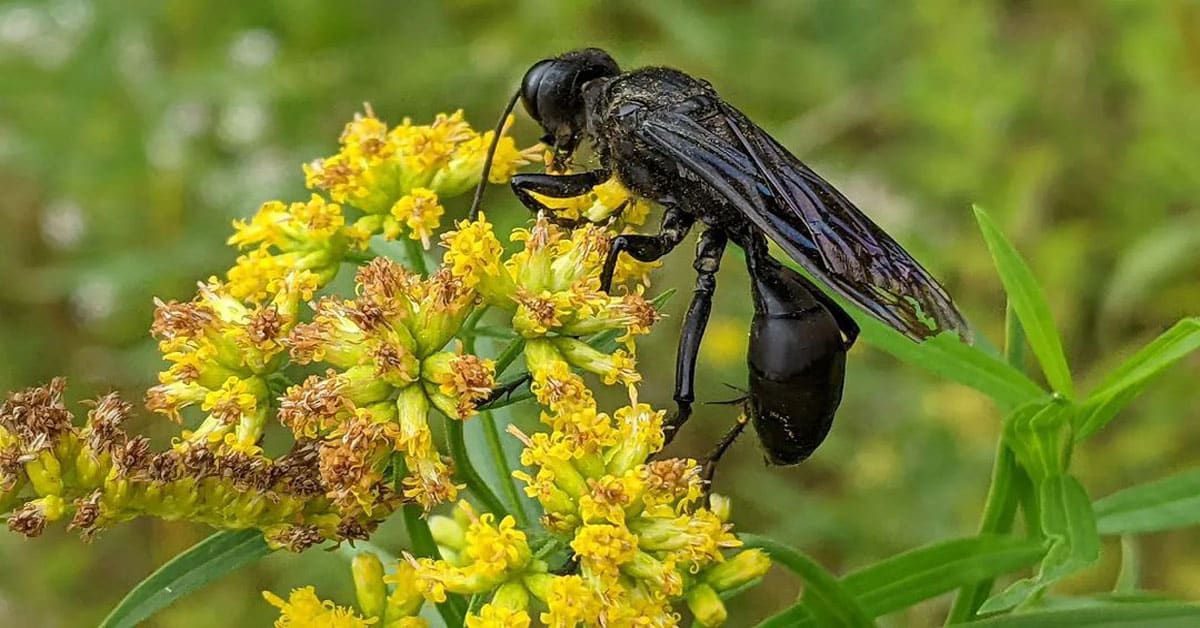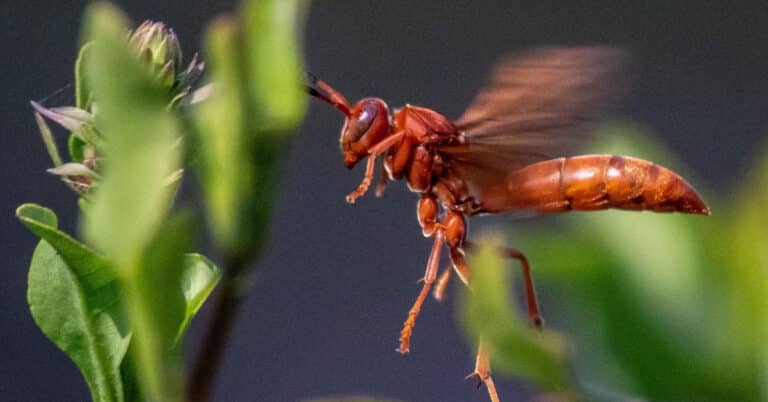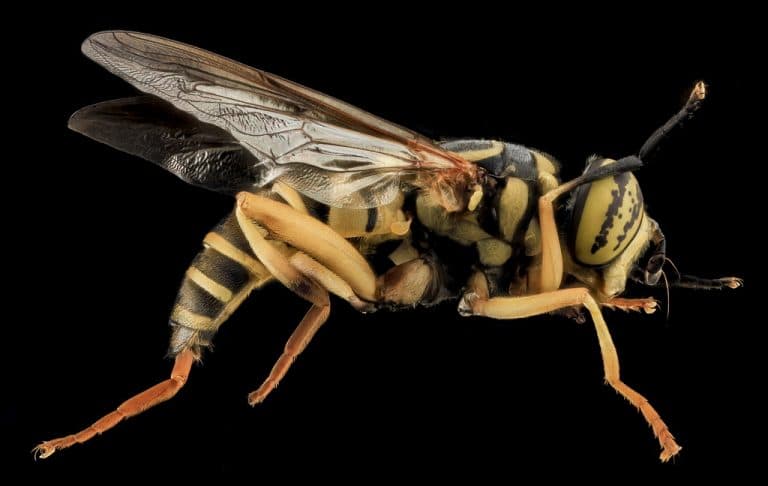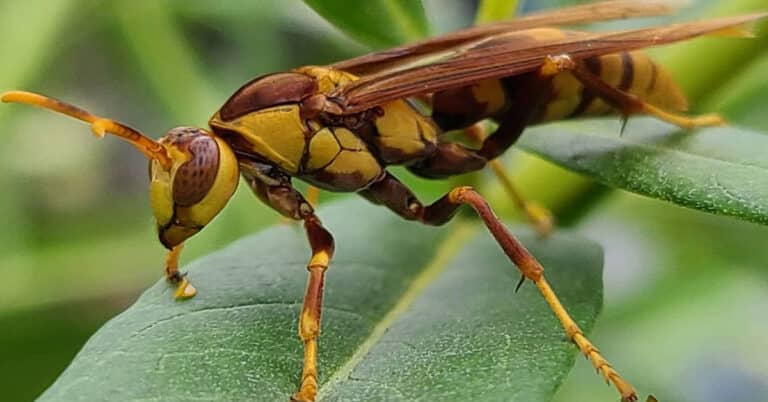Great Black Wasp Facts
Wasps came into this world roughly 240 million years ago during the mid-Triassic period, and they’ve evolved into over 30,000 different species today. Roughly 4,000 species of which belong to the United States, including the black wasp, with thousands upon thousands still waiting to be discovered across the globe.
Some of the smartest scientists in the world say ants evolved from wasps between 140-and-168 million years ago. The same could be said for bees as well, which interestingly enough also evolved from wasps about 120 million years ago during the mid-Cretaceous.
Fast forward 120 million years and here we are at the beginning of 2023, where insects have never been so dominant. Sure, they used to be bigger, but their diversity has really grown over the years, to where there are an estimated 10,000,000,000,000,000,000 in the world right now across 5.5 million species.
And, there’s also upwards of another 30 million yet to be discovered.
That brings us to today’s topic, the great black wasp.
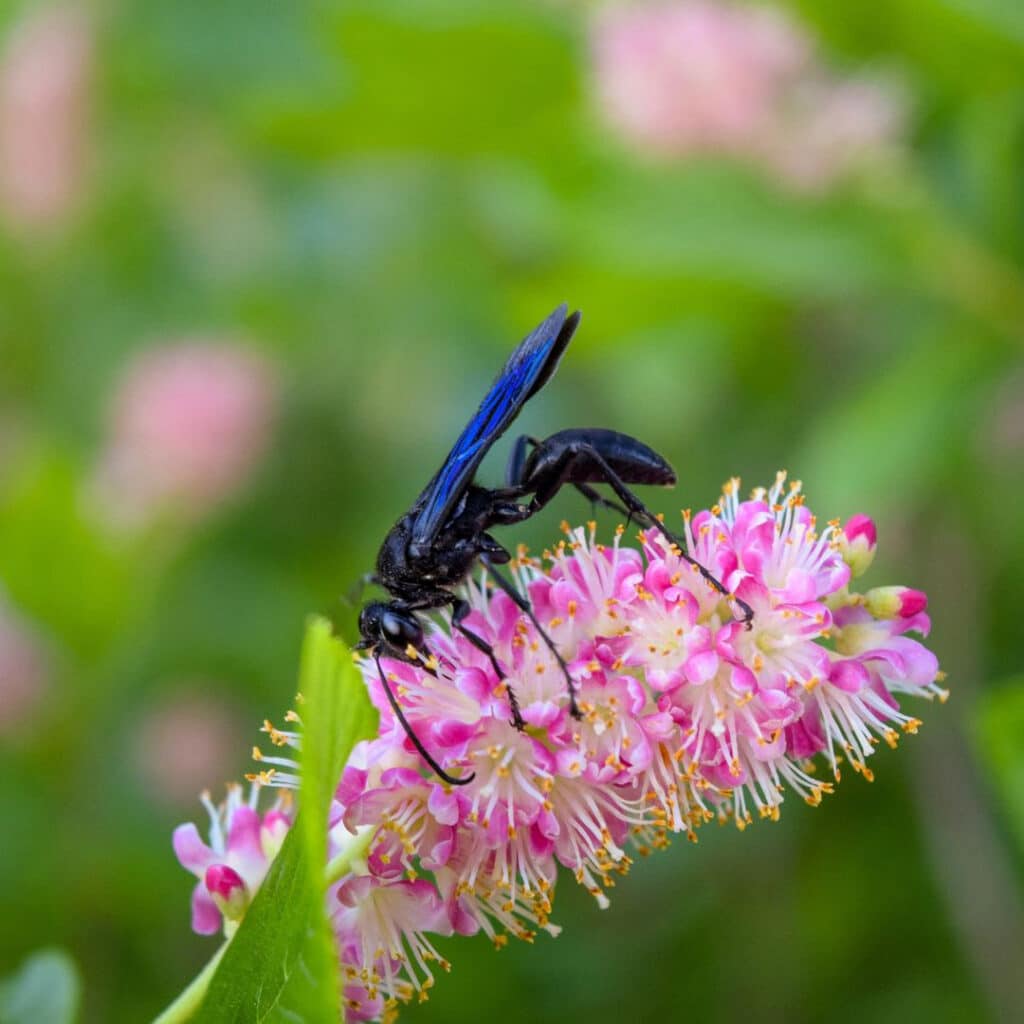
Black Wasp Distribution
Black wasps are found all over North America, from the east to west coasts of the continent. They are quite the adaptable species, as they can survive in a multitude of climates, though the majority of them do seem to prefer the western side of the continent due to the warmer weather.
Considering their wide distribution, there are also a number of subspecies of black wasp.
Black Wasp Identification
Females are generally larger than males, measuring between 1.3-and-1.5 inches at full maturity, while males rarely exceed 1.1 inches. They are a species of digger wasp, meaning the dig burrows that they inhabit.
Black wasps are quite easy to identify, due to their entirely black color. Most other wasps have stripes, or some other kind of distinctive marking. These do not however, and they have a slight blueish metallic appearance to their wings.
Black Wasp Diet
Black wasps feed on a variety of insects, such as grasshoppers, locusts, cicadas, katydids, and crickets. They will also consume nectar from flowers, given its high energy content due to the sugars in it.
At times, the black wasp, like other insects and arachnids, is also known to feed on its young while they’re still too small to defend themselves.
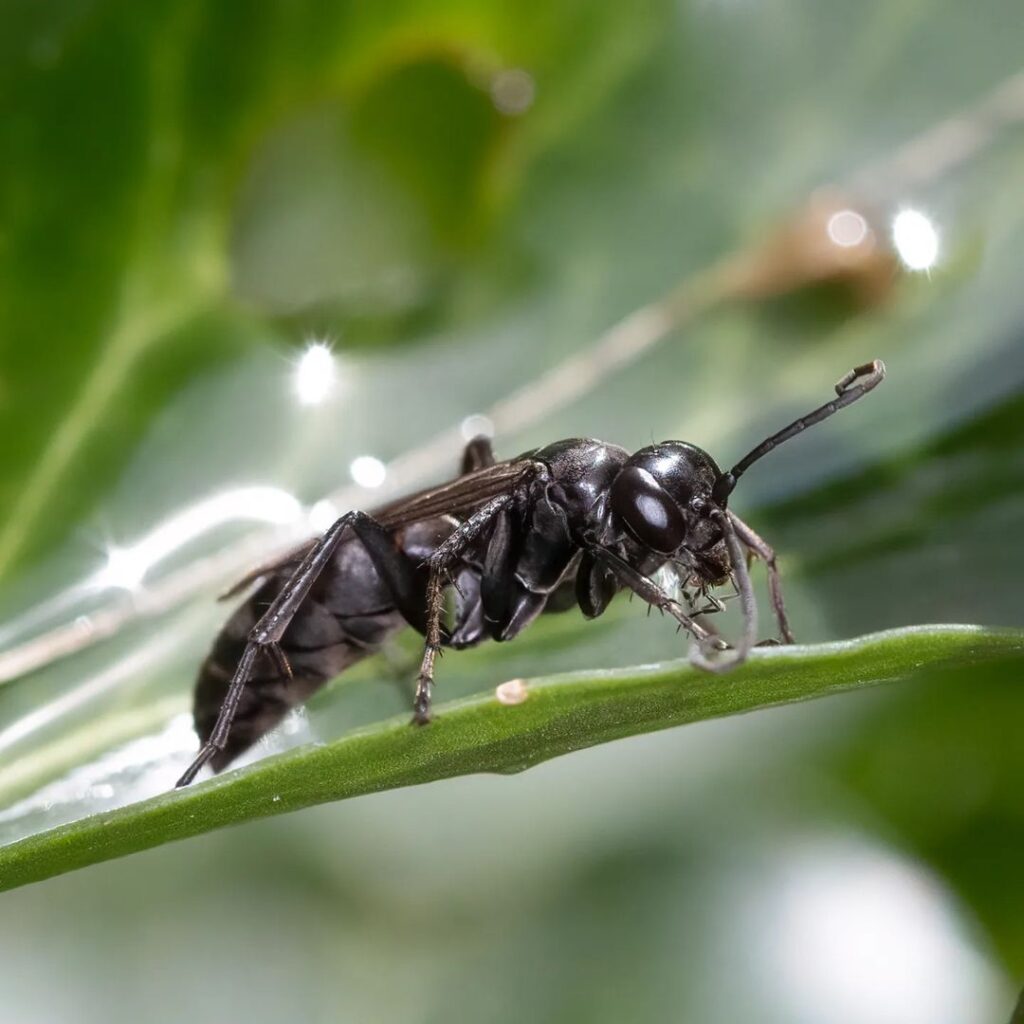
Black Wasp Venom
Though painful, the venom of a black wasp is no more potent than the average bee sting. If you’re allergic to insect stings however, you could be in trouble should you get stung.
In contrast, like bees, only female wasps possess the ability to sting their prey, and unlike bees, they can sting multiple times in the same attack.
Luckily for us humans however, black wasps are a solitary species, meaning they don’t have a colony of others to defend them should they attack. This makes them a non-aggressive species to humans.
But, should you aggravate them, they will certainly attack just as any other wasp would.
Considering males cannot sting, their sole purpose of life is to mate and reproduce.
Black Wasp Reproduction
Adult female black wasps will find a host to birth their young into, usually a worm, grub, or caterpillar-like animal that is soft on the outside and has a lot of fat on the inside.
They’ll deliver a sting to the animal, paralyzing it, before birthing their young into its body. This doesn’t kill the host, however, and it doesn’t numb them either.
The poor animal is destined for doom as the larva grow inside of it and eventually eat their way out.
From birth, most wasps live between 12-and-22 days. However, to our surprise, queen wasps can live upwards of an entire year.
Black wasps help pollinate milkweed plants, which then attracts butterflies to the plant. This makes them a very important part of our ecosystem in the states.
If you enjoyed this piece, feel free to share it on social media!

I started writing in the fourth quarter of 2018. I wrote solely about MMA and boxing up until October of 2022, where I began writing about animals; primarily dangerous, venomous species. They’ve always fascinated me. Considering, my goal is to make a living by teaching people about these wonderful creatures. You can check out my Facebook page, where every article I’ve ever written currently sits, or you can check out my Twitter page, where I’ve shared all of my animal pieces to date.

